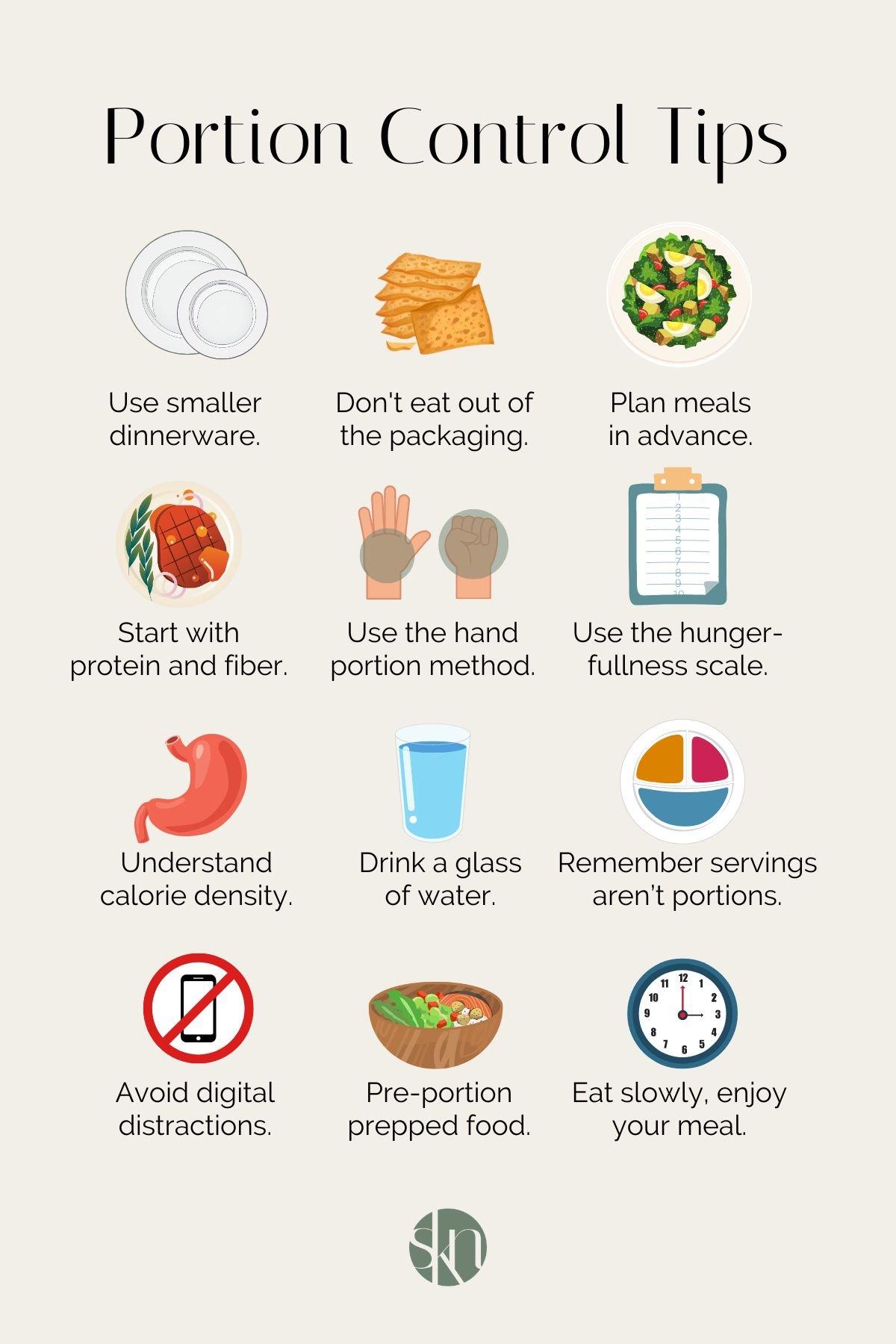In today’s fast-paced world, maintaining a healthy diet can often feel like a daunting task, especially when it comes to portion control. The traditional approach of measuring every bite can be tedious and impractical for many. Fortunately, there are effective strategies to manage portion sizes without the need for constant measuring or calorie counting. This guide will equip you with intuitive and straightforward techniques to help you naturally regulate your portions, empowering you to make healthier choices effortlessly. Whether you’re dining out or preparing meals at home, these practical tips will enable you to enjoy your food while keeping your health goals in check. Let’s dive into the art of mindful eating and discover how you can take control of your portions with confidence and ease.
Mastering Mindful Eating for Portion Control
Learning to eat mindfully can transform your relationship with food and help you intuitively manage your portions without the need for constant measuring. Begin by tuning into your body’s hunger signals. Before each meal, ask yourself how hungry you truly are, and adjust your portion size accordingly. It’s crucial to eat slowly, savoring each bite, which allows your brain to register fullness more effectively. This practice not only aids in digestion but also enhances your dining experience.
- Prioritize quality over quantity: Focus on nutrient-dense foods that satisfy and nourish your body.
- Use smaller plates: Trick your brain into feeling satisfied with less by reducing the surface area of your serving ware.
- Eliminate distractions: Turn off screens and focus solely on the meal in front of you to prevent mindless overeating.
- Listen to your body: Stop eating when you feel 80% full to avoid discomfort and unnecessary calorie intake.
By incorporating these mindful eating strategies, you’ll find that you naturally eat less and enjoy your meals more, all without the tedious task of measuring every bite.

Harnessing the Power of Visual Cues
Visual cues can be your secret weapon in controlling portion sizes effortlessly. Instead of meticulously measuring every bite, train your eyes to recognize what a healthy portion looks like on your plate. This approach not only saves time but also makes eating more intuitive and enjoyable.
- Plate Size Matters: Opt for smaller plates. Studies show that using a smaller plate can make portions appear larger, tricking your brain into feeling satisfied with less food.
- Color Contrast: Create a stark contrast between your food and the plate. A brightly colored meal on a neutral plate can help you better judge portions compared to food that blends in.
- Rule of Halves: Fill half your plate with vegetables. This naturally limits space for higher-calorie foods and boosts your intake of nutrients.
By incorporating these visual strategies, you can control your portions with ease, making mindful eating a seamless part of your daily routine.

Building a Balanced Plate with Intuition
Crafting a meal that satisfies both your body and mind starts with recognizing your internal cues. This involves tuning into your hunger signals and acknowledging when you’re full, rather than relying on external measurements. Begin by visualizing your plate as a canvas, with each section representing different food groups. Aim to fill half of your plate with colorful vegetables and fruits, a quarter with lean proteins like chicken or tofu, and the remaining quarter with whole grains such as quinoa or brown rice. This visual guide allows for flexibility and personalization, encouraging you to adapt based on your body’s needs.
- Listen to Your Body: Before reaching for seconds, pause to assess your level of fullness.
- Embrace Variety: A diverse palette of foods not only pleases the eye but also ensures a range of nutrients.
- Mindful Eating: Slow down and savor each bite, appreciating the flavors and textures.
Trusting your intuition helps create a balanced plate that nourishes without the need for strict measurements. By focusing on the quality and diversity of your food choices, you can enjoy meals that are both satisfying and aligned with your wellness goals.

Understanding Hunger Signals to Avoid Overeating
Recognizing your body’s natural hunger signals is a crucial step towards managing portion sizes intuitively. Instead of relying on external cues like calorie counts or portion measurements, focus on the internal cues your body provides. Here are some signs that indicate genuine hunger:
- Physical sensations: A growling stomach, slight fatigue, or a headache can be indicators that your body needs fuel.
- Emotional state: Consider whether you’re eating out of boredom, stress, or genuine hunger. True hunger is rarely urgent.
- Time since last meal: If it’s been several hours since your last meal, your hunger might be legitimate.
Developing an awareness of these signals allows you to differentiate between physical hunger and emotional cravings, helping you eat more mindfully. This approach can naturally guide you to eat the right amount without the need for constant measuring, leading to more satisfaction and less overeating. Remember, it’s about trusting your body to tell you when it’s time to eat and when it’s time to stop.
